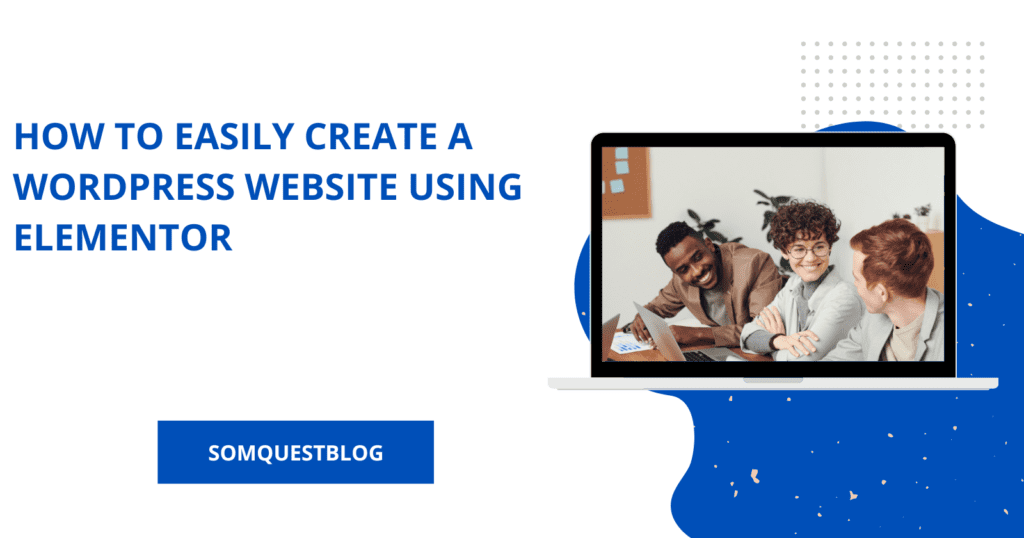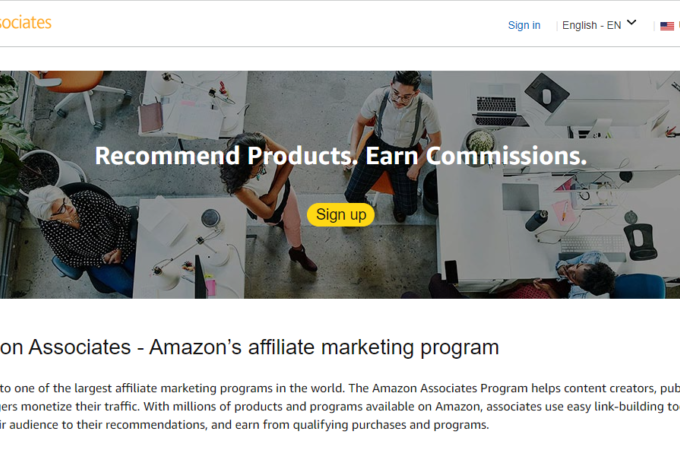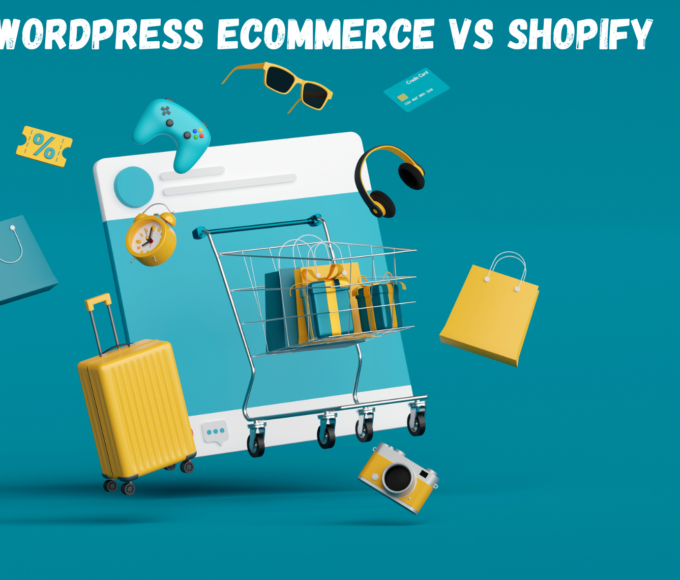If you are running an ecommerce store, you know that it takes more than just setting up a website and listing your products to get customers to buy from you. In today’s competitive online market, you need to have a solid marketing strategy to stand out from the crowd and drive traffic to your store. In this article, How to Market an Ecommerce Store, we will walk you through some effective ways to market your ecommerce store and boost your sales.
One of the most important aspects of marketing your ecommerce store is having a clear understanding of your target audience. Who are your ideal customers? What are their interests, needs, and pain points? By answering these questions, you can create targeted marketing campaigns that resonate with your audience and drive conversions. You can use tools like Google Analytics to gather data on your website visitors and create buyer personas to guide your marketing efforts.
Another effective way to market your ecommerce store is through social media. Platforms like Facebook, Instagram, and Twitter offer a great way to connect with your audience and build a community around your brand. By sharing engaging content, running targeted ads, and interacting with your followers, you can increase your brand awareness and drive traffic to your store. Just be sure to choose the right platforms for your audience and focus on quality over quantity when it comes to your social media presence.
Table of Contents
Understanding Ecommerce Store Marketing
As an ecommerce store owner, understanding ecommerce store marketing is crucial to the success of your business. In this section, we will cover the fundamentals of ecommerce marketing and the importance of marketing for ecommerce stores.
Fundamentals of Ecommerce Marketing
Ecommerce marketing involves promoting your online store through various marketing channels to drive traffic, increase sales, and build brand awareness. The main goal of ecommerce marketing is to attract potential customers to your online store and convert them into paying customers.
To achieve this, you need to have a deep understanding of your target audience, their needs, and their purchase behaviour. This knowledge will help you create targeted marketing campaigns that resonate with your audience and drive conversions.
Some of the key ecommerce marketing strategies include search engine optimisation (SEO), pay-per-click (PPC) advertising, email marketing, social media marketing, and content marketing. Each of these strategies has its own unique benefits and can be used to achieve different marketing objectives.
Importance of Marketing for Ecommerce Store
Marketing is an essential aspect of any ecommerce store’s success. Without marketing, your online store may not get the visibility it needs to attract potential customers and generate sales.
Marketing helps you create brand awareness, build trust with your audience, and establish your store as a reputable and trustworthy source of products or services. It also helps you stay ahead of your competition and drive traffic and sales to your online store.
In addition, marketing allows you to track your performance and measure the effectiveness of your marketing campaigns. By analysing your marketing metrics, you can identify areas for improvement and refine your marketing strategy to achieve better results.
In conclusion, understanding ecommerce store marketing is crucial to the success of your online store. By implementing effective marketing strategies, you can drive traffic, increase sales, and build a loyal customer base.
Building a Marketing Strategy
When it comes to marketing your ecommerce store, having a solid strategy is essential. Without a plan in place, you risk wasting time and money on ineffective marketing tactics. In this section, we will discuss how to build a marketing strategy for your ecommerce store.
Identifying Target Audience
The first step in building your marketing strategy is to identify your target audience. Who are the people you want to reach with your marketing efforts? What are their needs, interests, and pain points? Once you have a clear understanding of your target audience, you can tailor your marketing messages and tactics to resonate with them.
To identify your target audience, you can use a variety of methods, including:
- Conducting market research
- Analyzing customer data
- Creating buyer personas
By understanding your target audience, you can create marketing messages that speak directly to their needs and interests, increasing the chances that they will engage with your brand.
Competitor Analysis
Another important aspect of building a marketing strategy is conducting a competitor analysis. By understanding your competitors, you can identify gaps in the market and opportunities to differentiate your brand.
To conduct a competitor analysis, you should:
- Identify your top competitors
- Analyze their marketing tactics and messages
- Look for gaps in the market that your brand can fill
By understanding your competitors, you can create a marketing strategy that sets your brand apart and resonates with your target audience.
In conclusion, building a marketing strategy for your ecommerce store is essential for success. By identifying your target audience and conducting a competitor analysis, you can create a plan that resonates with your customers and sets your brand apart.
Implementing Marketing Techniques
Marketing your ecommerce store can be challenging, but with the right techniques, you can reach your target audience and increase sales. Here are some effective marketing techniques to implement:
SEO for Ecommerce
Search Engine Optimization (SEO) is crucial for ecommerce stores as it helps you to rank higher in search results, driving more traffic to your website. Start by researching relevant keywords and incorporating them into your website content, including product descriptions, category pages, and blog posts. Make sure your website is mobile-friendly, as more and more people are using mobile devices to shop online. Additionally, optimize your website’s loading speed, as slow-loading websites can lead to high bounce rates.
Email Marketing
Email marketing is a powerful tool for ecommerce stores to engage with customers and drive sales. Start by building an email list of subscribers who are interested in your products. You can offer incentives such as discounts or freebies to encourage people to sign up. Once you have a list, send out regular newsletters with updates on new products, promotions, and other relevant information. Personalize your emails by addressing subscribers by name and segmenting your list based on interests and behaviours.
Social Media Marketing
Social media is an effective way to reach a wider audience and build brand awareness. Start by identifying which social media platforms your target audience is using and create profiles on those platforms. Post regular updates on your products, promotions, and other relevant information. Use hashtags to increase visibility and engage with your followers by responding to comments and messages. Collaborate with influencers in your industry to reach a wider audience and build credibility.
Implementing these marketing techniques can help you to grow your ecommerce store and reach your target audience. By optimizing your website for SEO, engaging with customers through email marketing, and building brand awareness through social media, you can increase sales and achieve success.
7 Ways Sellfy Makes E-Commerce Easier
Managing Ecommerce Operations
Running an ecommerce store involves more than just marketing and sales. You also need to manage the day-to-day operations of your business, including shipping orders and handling customer returns. Here are some tips to help you manage your ecommerce operations effectively.
How to Ship Ecommerce Orders
Shipping is a critical part of ecommerce operations. Customers expect their orders to arrive quickly and in good condition. Here are some tips to help you ship your ecommerce orders efficiently:
- Use a reliable shipping carrier: Choose a shipping carrier that offers reliable and affordable shipping options. You can also consider using a fulfilment service that will handle your shipping for you.
- Use quality packaging materials: Use sturdy boxes and packing materials to protect your products during shipping. You can also use branded packaging to create a more professional image for your store.
- Provide tracking information: Provide your customers with tracking information so they can monitor the status of their orders. This will help reduce customer inquiries and increase satisfaction.
How to Handle Customer Returns
Handling customer returns is an inevitable part of ecommerce operations. Here are some tips to help you handle customer returns effectively:
- Have a clear return policy: Make sure your return policy is clear and easy to understand. Include information on how to initiate a return, what items are eligible for return, and how refunds will be processed.
- Make the return process easy: Make it easy for customers to initiate a return by providing a simple return form or process. You can also consider offering free returns to increase customer satisfaction.
- Inspect returned items carefully: Inspect returned items carefully to ensure they are in good condition and eligible for resale. If an item is damaged or not eligible for return, communicate this clearly to the customer.
Managing ecommerce operations can be challenging, but with the right strategies in place, you can ensure your business runs smoothly and efficiently.
Here is a list of Top online stores in France in 2022, by e-commerce net sales.
Here is a list of Top online stores worldwide in 2022, by e-commerce net sales.
Monitoring and Improving Marketing Efforts
As an ecommerce store owner, it is essential to monitor and improve your marketing efforts continually. This section will cover two core areas of marketing improvement: using analytics for improvement and adapting to market changes.
Using Analytics for Improvement
Analytics is an essential tool for any ecommerce store owner. By using analytics, you can monitor your website’s performance, track user behaviour, and identify areas for improvement.
One of the most important metrics to track is your conversion rate. A conversion rate is the percentage of visitors who complete a desired action, such as making a purchase or signing up for a newsletter. By monitoring your conversion rate, you can identify areas where your website is underperforming and make changes to improve it.
Another valuable metric to track is your bounce rate. A bounce rate is the percentage of visitors who leave your website after viewing only one page. A high bounce rate can indicate that your website is not engaging visitors, and you may need to make changes to improve the user experience.
Adapting to Market Changes
The ecommerce market is continually evolving, and as a store owner, you need to adapt to these changes to remain competitive. One way to stay ahead of the curve is to monitor industry trends and adjust your marketing strategy accordingly.
For example, if you notice that your competitors are offering free shipping, you may need to adjust your shipping rates to remain competitive. Similarly, if you notice that your customers are increasingly using mobile devices to shop, you may need to invest in a mobile-friendly website or app.
In conclusion, monitoring and improving your marketing efforts is essential for the success of your ecommerce store. By using analytics to track your website’s performance and adapting to market changes, you can stay ahead of the competition and continue to grow your business.
Frequently Asked Questions: How to Market an Ecommerce Store

What are some effective ecommerce marketing strategies?
There are many effective ecommerce marketing strategies that can help you drive traffic to your online store and increase sales. Some of the most popular strategies include search engine optimization (SEO), pay-per-click advertising (PPC), email marketing, content marketing, and social media marketing. By combining these strategies and tailoring them to your specific audience, you can create a comprehensive marketing plan that will help you achieve your goals.
What are some useful tools for ecommerce marketing?
There are many useful tools available to help you with your ecommerce marketing efforts. Some of the most popular tools include Google Analytics, SEMrush, Ahrefs, Mailchimp, Hootsuite, and Buffer. These tools can help you track your website traffic, analyze your competitors, manage your email campaigns, and schedule your social media posts.
What are some recommended ecommerce marketing books?
If you’re looking to expand your knowledge of ecommerce marketing, there are many great books available. Some of the most highly recommended books include “Ecommerce Evolved” by Tanner Larsson, “The Ultimate Guide to Ecommerce Email Marketing” by Jimmy Kim, “Ecommerce Marketing: How to Get Traffic that BUYS to Your Website” by Quinn Zeda, and “The Complete Guide to Ecommerce SEO” by Armando Roggio.
How can I promote my online business on social media?
Social media is a powerful tool for promoting your online business. To get started, you should create profiles on the most popular social media platforms, such as Facebook, Twitter, Instagram, and LinkedIn. Then, you can start sharing content that is relevant to your audience, such as blog posts, product photos, and special promotions. You can also use paid advertising on these platforms to reach a wider audience.
What should be included in an ecommerce marketing plan template?
An ecommerce marketing plan template should include a detailed analysis of your target audience, a list of your marketing goals, a breakdown of your marketing budget, a timeline for your marketing campaigns, and a list of the specific tactics you will use to achieve your goals. It should also include metrics for measuring success, such as website traffic, conversion rates, and sales.
What are some creative ecommerce campaign ideas?
There are many creative ecommerce campaign ideas that can help you stand out from the competition. Some ideas include creating a viral video, hosting a social media contest, offering a limited-time promotion, partnering with influencers, and creating a loyalty program. By thinking outside the box and tailoring your campaigns to your specific audience, you can create campaigns that are both effective and memorable.
















